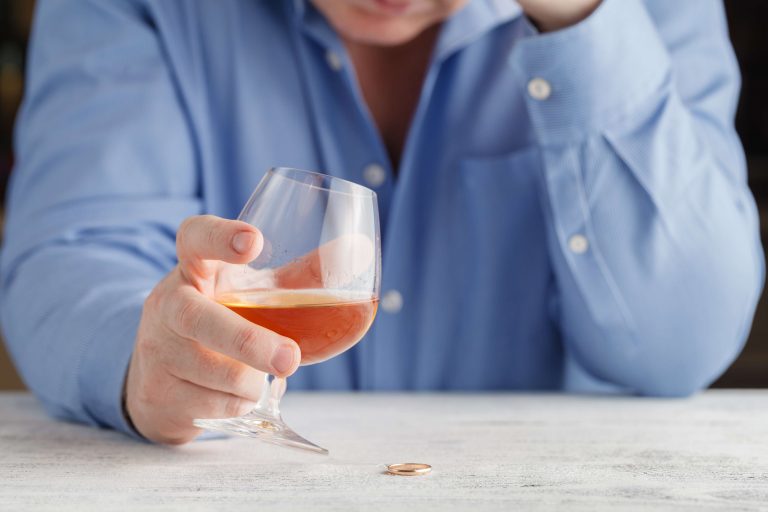Content
Additionally, individuals can opt into treatment programs that offer varying levels of care depending on the person’s unique needs. As one can see, alcohol abuse can come in many shapes and sizes, but in all cases can lead to a variety of problems. High-functioning alcoholism is still alcoholism, and high-functioning alcohol abuse is still alcohol abuse. Ultimately alcohol affects all individuals the same way regardless of sex, age, race, religion, sexual orientation, or socioeconomic status.
Is there such thing as a functional alcoholic?
A high-functioning alcoholic is someone who appears to have their drinking and behavior relatively under control. They might drink too much or too often, but they seem to be doing fairly well in various areas despite possible substance abuse.
Under the surface, this form of alcoholism can cause severe psychological and emotional damage to the alcoholic and also their loved ones.. However, these individuals still have to deal with the effects of alcohol abuse, including mental and physical health problems. One of the hallmarks of addiction is a person’s fear of not being able to consume whatever their drug of choice is. For those who aren’t familiar with this disorder first-hand, when they hear the term “alcoholic,” they might picture someone unable to hold a job or maintain healthy relationships because of their drinking. But having alcohol use disorder doesn’t necessarily mean a person is unable to function in their daily life. 19 to 25% of all people in the US with an alcohol use disorder are considered high functioning alcoholics.
Patient Care Network
Since high-functioning alcoholics don’t want others in their business, it’s common for them to prevent people from visiting their homes for fear of their drinking habits being betrayed. Many who abuse alcohol believe themselves to be high-functioning alcoholics, this is a negative line of thinking. While they may be able to get through the day with their habits, it is not a healthy lifestyle and addiction treatment should still be the goal. It is hard to see the signs of functional alcoholism in those closest to you.
- Take some time to learn the signs and symptoms to better understand this issue that many individuals face.
- High-functioning alcoholics get used to having some level of alcohol in their system all of the time, which means they never really “come off” of it.
- Most started drinking in their late teens, but don’t become addicted to alcohol until they are in their late thirties.
- However, alcohol withdrawal is potentially life-threatening, so your doctor or healthcare provider may recommend a medical detox program.
Unfortunately, alcohol is also among the most commonly abused substances. Even worse, alcohol is the third-leading preventable cause of death in the United States. Alcohol might be socially acceptable, and AUD may not garner the same press coverage as the opioid epidemic, but it remains a clear and present danger when abused. How can you pick up on the early warning signs and characteristics of high-functioning alcoholism then? We’ll explore this next before we examine how to identify and help a high-functioning alcoholic in your life. To better understand this form of alcohol abuse, we must first take a look at the definition of high-functioning alcoholic.
Causes and Risk Factors of High-Functioning Alcoholism
Relating to other people with substance abuse issues may help someone break through denial and begin to recover. Many alcoholics dream of drinking in a way that does not affect their daily life. While some may experience periods of manageability, their ability to function and continue drinking is short-lived. Some will be able to juggle their responsibilities with work, family, and financial obligations without a problem for short periods during active drinking.
What is the difference between a light drinker and a heavy drinker?
Physicians operationally defined "light" drinking as 1.2 drinks/day, "moderate" drinking as 2.2 drinks/day, and "heavy" drinking as 3.5 drinks/day.
The term high-functioning alcoholic refers to a pattern of alcohol abuse that has little interference with social, professional, or personal obligations. For this reason, it is often difficult for functional alcoholics to label their drinking patterns or come to terms with their habits. If you or a loved one is struggling with alcohol abuse, Footprints to Recovery high functioning alcoholic can help. Our drug and alcohol addiction treatment is evidence-based and tailored to your individual needs. We’ll help you begin working through trauma and other challenges that perpetuate substance abuse and mental health issues. Since they keep up with their professional and personal obligations, friends and family members begin to view their drinking as normal.
Here’s why high-functioning alcoholism is dangerous
Alcohol abuse increases the risk of physical and emotional violence, as well as substance abuse in other family members. An addiction therapist can help you find positive ways to deal with the stress of living with a functional alcoholic. A high-functioning alcoholic can go about daily life and take care of their obligations (like work or school) primarily undetected. Essentially, a high-functioning alcoholic is a person who is addicted to alcohol but has yet to really suffer from the negative consequences of their drinking. A high-functioning alcoholic may experience some consequences related to their drinking, but they are not enough to limit their ability to maintain their responsibilities.

Liver damage is the most talked about physical consequence and that is a concern almost immediately. Alcoholics can go on to develop heart, respiratory and gastrointestinal disorders. There can also be declines in their mental and overall health, especially if they’re not eating healthy diets or engaging in physical activity.
In addition to the health effects of having an alcohol use disorder, it can also take a toll on relationships. Drinking doesn’t just affect the individual; it affects the entire family unit. Peer pressure and easy availability of alcohol can increase the risk of developing an AUD. Negative life experiences, such as grief, abuse, or living in poverty, can also increase the odds. Nearly 20% of alcoholics are highly functional and well-educated with good incomes.
Since people with high-functioning AUD can be on the milder spectrum of the condition, the earlier treatment happens, the more it may be possible to avoid a progression. In the short term, alcohol use increases the risk for alcohol poisoning, fetal alcohol syndrome, accidents, injuries, violence, and risky sexual behavior. Usually, it is only when their continued drinking becomes more painful than the prospect of going through the pain of alcohol withdrawal, will they finally reach out for help. It is important to know that an AUD is a chronic but treatable disease. Early intervention and treatment can help reduce the severity of the disease and prevent further physical or mental complications from developing. A person who appears to be managing their alcohol intake but is experiencing issues with their relationship to alcohol has what is now known as an alcohol use disorder (AUD).
The Power Of Denial: Why High-Functioning Alcoholics Resist Treatment
It’s not uncommon to see high-functioning alcoholics replace meals with a few drinks. They tend to lose all interest in food, and instead, use mealtime as an excuse to start drinking again. There are many misconceptions about alcoholism that make it sound like an alcoholic is an easy person to spot, however, many alcoholics function effectively and lead relatively normal lives. The high functioning alcoholic usually appears normal in all aspects of their life except in the manner with which they drink.
Can you drink often and not be an alcoholic?
Nine in 10 adults who drink too much alcohol are not alcoholics or alcohol dependent, according to a new study released by the Centers for Disease Control and Prevention in collaboration with the Substance Abuse and Mental Health Services Administration (SAMHSA).
Even if you notice someone drinking moderately at totally inappropriate times – first thing in the morning, for instance – this could be an early warning sign of a building problem. The fact the person is concealing the amount they drink is enough to suggest there could be a problem. https://ecosoberhouse.com/ Pointing this out often results in either outright denial or an indignant and angry reaction. Maybe you’ve already tried to broach the subject of your loved one’s alcohol consumption without any joy. If you’ve decided it’s time to make a change, The Hope House is here to help.
What functions are these types of alcoholics able to achieve?
A functional alcoholic, on the other hand, appears to escape unscathed. Even if the person in question doesn’t present any outward signs of addiction, they may be burdened by the same problems as a heavy drinker unable to function as well. The understanding of a high-functioning alcoholic is the picture of my personal recovery journey.
- Our free email newsletter offers guidance from top addiction specialists, inspiring sobriety stories, and practical recovery tips to help you or a loved one keep coming back and staying sober.
- Usually, it is only when their continued drinking becomes more painful than the prospect of going through the pain of alcohol withdrawal, will they finally reach out for help.
- These numbers do not tell the entire story, however, as alcohol affects each person differently.
- They are at risk of drinking and driving, using poor judgment with sexual partners and blacking out.
However, there are individuals that meet the criteria for AUD but do not experience these impacts. By Buddy T
Buddy T is a writer and founding member of the Online Al-Anon Outreach Committee with decades of experience writing about alcoholism. Because he is a member of a support group that stresses the importance of anonymity at the public level, he does not use his photograph or his real name on this website.



















